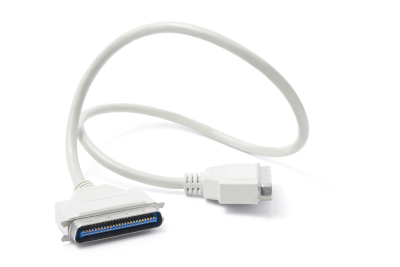What Are SCSI Connectors?

SCSI connectors are one of the interfaces used to transfer data between computer systems.
It refers to a connector that is compatible with SCSI, an interface standardized by the American National Standards Institute. SCSI stands for “small computer system interface” and is read as “SCSI.”
SCSI is characterized by the use of parallel signals for communication; signals are transmitted in parallel using eight or 16 copper wires. Parallel is a method of communicating multiple bits simultaneously using multiple transmission lines.
Uses of SCSI Connectors
SCSI connectors are used to connect peripheral devices to a computer. Specifically, they are used for mice, keyboards, printers, etc.
However, interface technology has evolved with improvements in integration technology, and recently USB connectors are commonly used as connectors for peripheral devices.
Principle of SCSI Connectors
The SCSI connector is used as the physical connection for this SCSI connection.
In actual operation, there are many primary-secondary connections between computers and peripheral devices, but SCSI connections were originally designed with the assumption that each device operates on an equal footing. In other words, many devices can be connected to a single signal line.
This connection type is called a path type. Usually, a terminator (termination resistor) is attached at the end of a signal line called a path. Alternatively, devices can be strung together on a circular signal line instead of a straight line with a termination (daisy-chain connection).
Types of SCSI Connectors
SCSI connectors come in a variety of standards and cable lengths. Depending on the standard, the size of the terminals often varies.
1. SCSI-1, SCSI-2, and Ultra SCSI Standards
Since SCSI first appeared, improvements in computer processing power have led to a variety of standards, including increases in data transfer speed and maximum number of connections. Roughly speaking, SCSI-1, SCSI-2, and Ultra SCSI are the most advanced standards, in that order.
These standards use parallel data transfer. For example, Ultra 320 SCSI, the most powerful of these standards, has a maximum transfer rate of 320 MB/S, a transfer width of 16 bits, a maximum wiring length of 12 m with LVD, and a maximum number of 16 devices connected.
Since parallel data transfer reached its technological limit, serial SCSI was developed, as described in the next section.
2. Serial Attached SCSI (SAS)
With the improvement of serial interface technology, the Serial Attached SCSI (SAS) standard has been developed to apply serial data transfer to SCSI as well.
The maximum transfer rate for SAS is 3 GB/s, the cable length is 8 m, and the number of connected devices is 128. If you need more than 8m, you can use an SAS expander to extend the distance.
In addition, SAS connectors cover the same physical layer as SATA and are interchangeable; SATA stands for “serial advanced technology attachment” and is one of the standards for connecting hard disks and optical drives to computers.